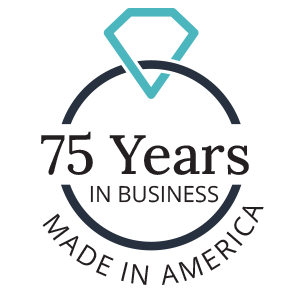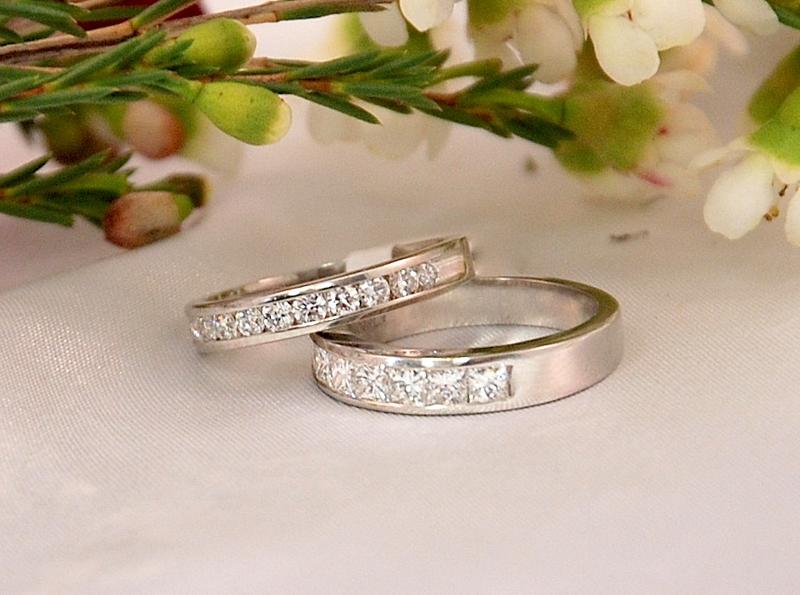So much is made of the engagement ring. It’s always so pretty, so sparkly, and the giving and receiving thereof is filled with such romance. Passion. Giddy excitement. But the truth of the matter is this: the engagement ring, in all its glory and undoubted unbridled joy, is merely a suggestion. It’s the wedding ring that truly matters. The wedding ring is the promise. The promise of true love everlasting, for better, for worse, for richer, for poorer, in sickness and in health. It is the wedding ring where the real joy lies. Why then is the choice of said ring so often given short shrift?
We’re here to help you make the wedding ring – and your choice thereof – a star player in your set of marriage symbols, a key item which will last just as long as your eternal love. Read on for a guide to the most important factors to consider before saying “I do” to your wedding rings.
Why a wedding ring?
It goes without saying that a wedding ring is so much more than just a band of metal – precious or otherwise. It’s a symbol of loyalty, love and longevity. A physical, tangible signal of a real commitment to your partner. Why the wedding ring though? Where, when, and why did this practice start anyway?
Some believe that the practice of exchanging wedding rings dates back to ancient Egypt, where committed lovers wove sedges, rushes and reeds into braided rings which they then exchanged as a symbol of their never-ending and immortal love. The rings themselves didn’t seem to last as long as their love however, and eventually rushes and reeds were replaced by leather, bone or ivory – the more expensive the ring’s material, supposedly the bigger and more steadfast the love. (Note: we don’t subscribe to this notion of going broke to prove your love – the material matters less than the truth of the sentiment behind the giving! See ‘Budget’ below as one of our most important factors to consider when you choose your wedding rings.)
Others believe the tradition only started with the Roman Empire, where men would ‘claim ownership’ of women by placing a ring on their finger – the symbolism being one of possession rather than of eternal, mutual love. (We know which backstory we prefer!)
Either way, one thing remains true: the circle of the wedding ring has long symbolized eternal, unbreakable commitment (whether from a place of passion or possession). The only question is: what do you want your symbol to look like? And how do you choose one that will go the distance of your marriage itself (i.e., until you both shall die)?
Top 10 factors to consider when choosing your wedding ring
1. Set a Budget
Yes love is grand. But your budget doesn’t have to be. Trust us: going into a marriage in debt, particularly debt incurred by what is essentially a tiny symbolic circle, is no way to start your life together. You know all those people who told your partner to set aside three months salary for the engagement ring? They’re the same ones telling you to set aside 3% of your total wedding budget on your wedding rings alone. Don’t listen to them. You know what you can afford. Talk to your jeweler about what you want, how much you can afford to spend, and how you can make the two fit together.
That said, things worth noting when contemplating your budget:
- Simple bands can be a cheaper option – depending on the material. Platinum or 18 karat gold, for example, is obviously going to cost more than gold plating or silver.
- Personalization of your rings will cost more. For example: if you want to add engravings, or embellishments like diamonds, you can expect the cost to jump significantly.
Which leads us to, factor #2…
2. Narrow down your options
Given your budgetary constraints (or lack thereof, as the case may be), you can now start narrowing down your options by focusing on one thing at a time:
Step 1: What is your style? Do you like simple or flashy? Bold or demure?
Step 2: Do you want a plain band or one with embellishments – diamonds or other gemstones?
Step 3: Do you prefer gold to silver? Platinum to gold? White gold or yellow gold? Which is your preferred material?
Step 4: Matching or not matching? Do you want your wedding ring to be the same metal as your engagement ring? Do you want your wedding ring to match your partner’s?
3. Factor in the engagement ring
Even if you don’t want your wedding ring to match the engagement ring, you do want it to look like they are a natural fit together – just like you and your partner. Things to think about:
- Do you want a matching set?
- Is the engagement ring unique or simple? The former may go better with a plain band, the latter may look better with a band that features added sparkle.
- Will you perhaps wear your wedding ring on its own, in which case you might want a more unique, perhaps embellished band.
4. Shop around
Now that you’ve got a better idea of what you want and how much you want to spend, give yourself some time to shop around. Go to ring shops. Try rings on. Research similar rings online. Compare prices. Try rings on for sizing and comfort. And if you want a custom ring, remember that then you really do need extra time – there can be no rush job on customization. And remember, when you’re shopping around, always, always…
5. Keep an open mind
Just because you’ve got a picture in your mind of the ring you want, if when you’re shopping around something totally different catches your eye, humor that impulse. Try it on for size. Just like your one true love, your soulmate, probably didn’t come exactly as you imagined, your wedding ring too might take you by surprise. You might fall in love with something completely different to your vision.
Also allow yourselves to be open to the suggestions of jewelers you meet and talk to. They have made making and selling rings their life’s work, so they know better than anyone what may or may not work with your ring, your lifestyle, your dream. Speaking of which…
6. Let your ring match your lifestyle
Your ring needs to be comfortable, no matter what you get up to. Do you work with your hands? Play racquet or bat sports? Play an instrument? It’s perhaps a good idea to avoid rings with gemstones which could easily knock against your chosen instrument or tool, come loose, and be lost forever. Go for something simple, solid and durable instead: platinum, for example, won’t wear away with scratching.
7. Size matters
Get your ring sized properly. Because you’ll be wearing your ring through thick and thin – quite literally, when you’re thicker or thinner, be it due to water retention, heat swelling, weight gain, pregnancy – you’re going to want a ring that’s not too tight and not too loose. To strike just the right balance, and find just the right size that will best weather all of those changes, schedule your final ring fitting at a time when your body temperature is normal.
8. Do quality checks
Make sure that you’re getting what you paid for: check for two marks inside the band of your ring. One will be the manufacturer’s trademark, and the other the quality mark, 18K or PLAT, for example, which tells you you’re really getting the metal you asked for.
9. Commit for the long term
Just like your marriage, your wedding ring is going to be in for the long haul. So while trends may catch your eye, think about whether or not that you’ll still be happy wearing that trend in 30, 40, 50 years. That’s not to say you can’t replace your wedding ring down the road if you want to, but you shouldn’t have to if you don’t! Make sense?
10. Ignore everything we just said
Finally, whatever wedding ring you choose, remember this: none of this really matters. Regardless of the material, t
he cost, the style, the aesthetics, or your own particular beliefs or religious views, when it comes to the wedding ring the sentiment behind the symbol is everything. The love and commitment is the real thing here. The rest? It’s just frosting on the proverbial wedding cake.



